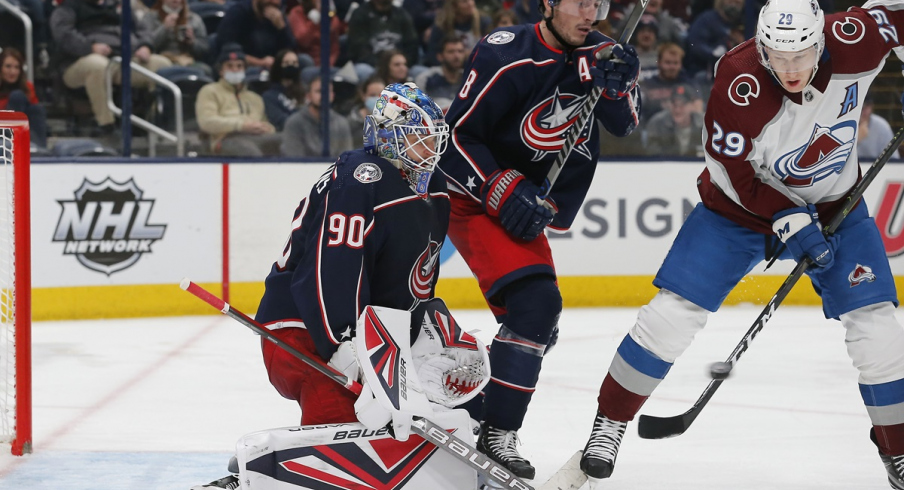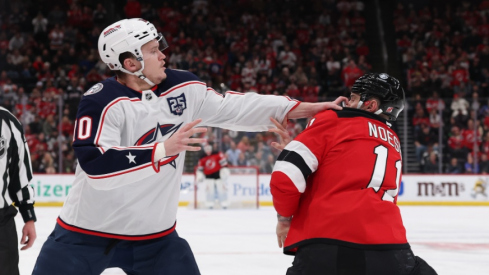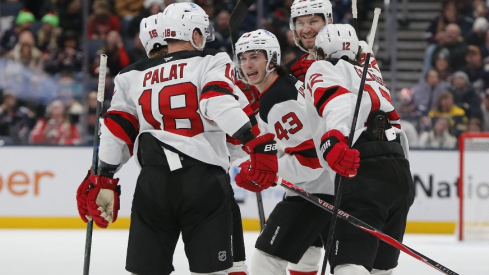It was a tumultuous offseason, and the head coach abruptly resigned late into the summer. The team struggled out of the gate, never rebounded, and finished in the basement of the NHL standings.
But enough about the 2016-17 Colorado Avalanche.
Unfortunately, that's where the convergences between the Avalanche and the 2023-24 Columbus Blue Jackets may end. The Avalanche finished last in the NHL standings and picked 4th in the NHL Draft, which was devastating at the time. They selected Cale Makar, stuck to their process, and then won a Stanley Cup five seasons later. Today, the Jared Bednar-coached team is competing for its fourth consecutive division title, and they are expected to be competitive, if not contenders, for the foreseeable future.
When then-head coach Patrick Roy stepped down in the summer of 2016, he issued a statement saying that "the vision of the coach and VP-hockey operations needs to be perfectly aligned with that of the organization." The Avalanche turned to Bednar, then 44, and stuck with him through a miserable 22-56-4 season. The Avalanche weren't bad, they were awful.
Nathan MacKinnon, 21, was still on his way to becoming the player that contends for hardware every season. Despite a pedestrian season (relatively), in which he tallied 16-37-53 in 82 games, he led all forwards in average TOI (19:57). He was still clearly figuring out the league, even in year four.
Mikko Rantanen, 20, played in his first NHL season. He exceeded expectations and scored 20 goals while playing, you guessed it, 18:03 per night. Only MacKinnon, Gabriel Landeskog (24, 18:47 TOI), and Matt Duchene (26, 18:18 TOI) played more among forwards. Notably, veteran role players, like Blake Comeau, Rene Bourque, and Carl Soderberg, played under 15 minutes per game.
The Avalanche were patient with Bednar. They understood that he inherited a bad team in a terrible spot, as the team was caught off guard from the off-season coaching debacle. The year was a mulligan.
But the young players played, and they sucked, and they learned.
The next season, the Avalanche were ousted in the first round of the playoffs by the Nashville Predators, but it was semantics. The team may have lost, but it was clear that they were on a steep upward trajectory. Makar joined the team during the next playoffs, and the rest is history.
I think about this team as a blueprint and as a cautionary tale. No two teams are identical, but there are similarities between the 2016-17 Avalanche and the current Blue Jackets. Both had an embarrassing coaching shakeup in the later stages of the offseason and a young and upstart roster with question marks throughout the lineup. The Avalanche leaned into the tank. The season before the dumpster fire, they were .500, but it was clear that they were in a new era. They let the kids play and gave Bednar the latitude to teach and develop over trying to win games that had no bearing on the standings.
Much of the discourse around the current Blue Jackets is about how the kids "need to learn how to win". Well, the Avalanche players didn't seem to learn throughout a 22-win season, but it hasn't stopped them since.
Colorado reaped the rewards. The season after, MacKinnon exploded for 97 points. Rantanen became a point-a-game player. The veterans helped to guide the team, but it was clear that the team was on the verge of becoming what it is now - a star-studded team with sustainable success.
Meanwhile, in Columbus, Boone Jenner, 30, leads all forwards in TOI. The six top average TOI leaders are, by age, 26, 27, 29, 30, 32, and 30. The team is in last place in the Eastern Conference and is trending for the same 4th overall pick that awaited Colorado. A coach who was placed in an impossible situation before the start of training camp has been adamant that winning games supersedes development, and there is no coherent plan for what is next to come. It's as though ownership, management, and the coaching staff see the same team and have three different visions (note: maybe two, it's hard to say if ownership sees anything at all).
Who can say if this team has a MacKinnon, Rantanen, Makar, etc? It's probably unlikely, but ... I guess we'll never know.


